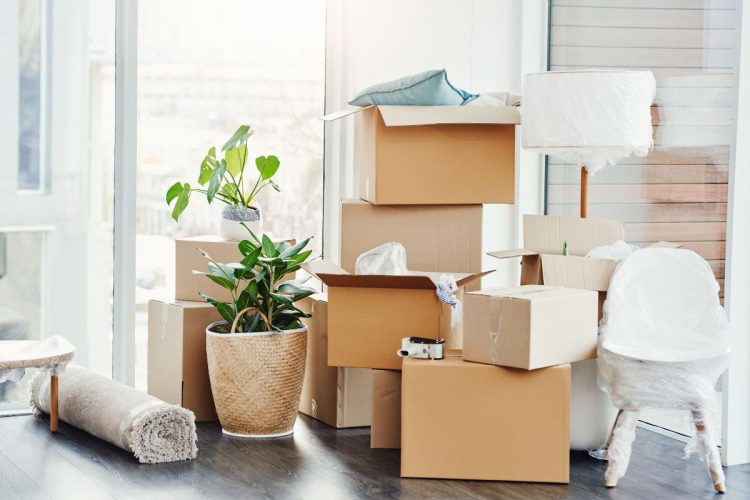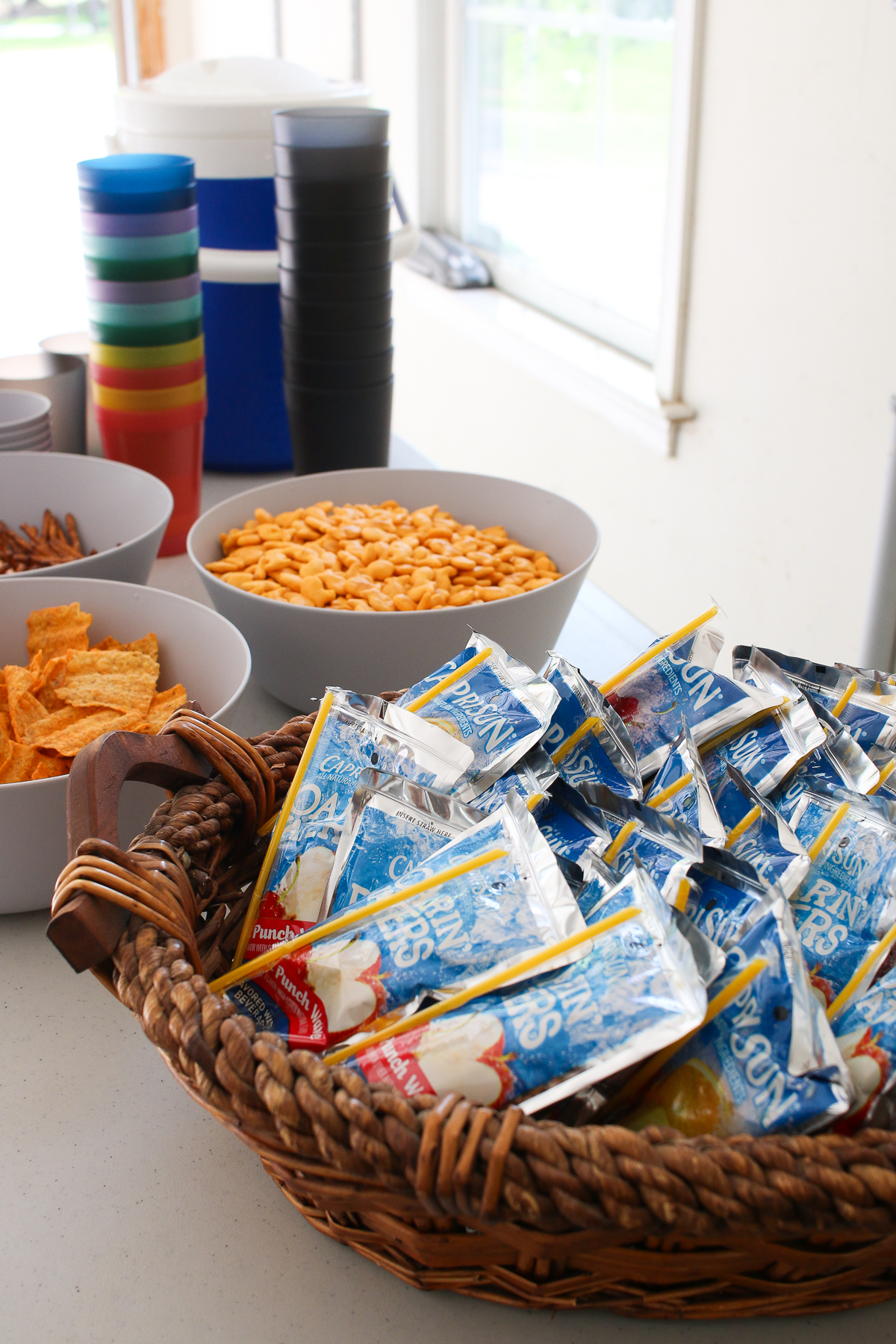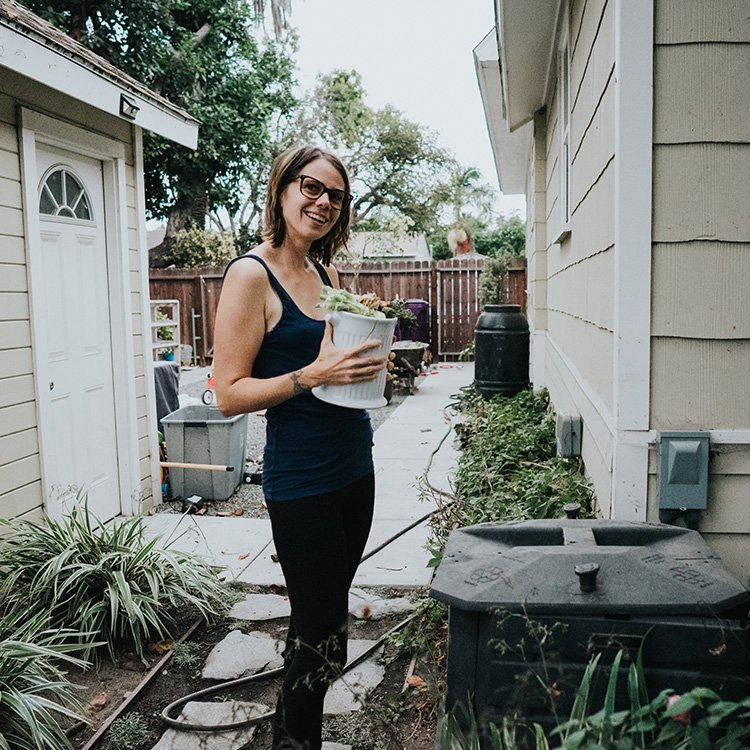7 Tips for a Zero Waste Move With Family
Looking for tips for an international zero-waste move with family? Sarah Burgess packed up her family of four to move from the United States back to their home in the United Kingdom after four years abroad. Read on for tips about how she significantly reduced waste related to her move and saved money in the process.

Four years ago, we moved from the United Kingdom to the United States for an adventure. This past summer, that adventure came to an end as we made the hard decision to pack up our stuff and our lives and relocate back to the UK. There’s nothing quite like getting shipping quotes to make you realize just how much cr*p you own!
Room by room we went around with two different shipping companies, pointing out everything that needed to be wrapped, boxed, and put in a shipping container. As someone who proudly shunned the tempting trinket shelves in Target and the ‘Buy Now’ button on Amazon, I found this process thoroughly depressing and humbling. No matter how minimalist you want to be, chances are, you still own A LOT of stuff (in our case it worked out as 1600 cubic feet of stuff).
You could argue that we should have just sold or donated it all and rebought when we got back. The carbon footprint of shipping it all across the Atlantic is pretty big. But the footprint of buying new is even bigger, and I don’t have the time to scour Facebook Marketplace or eBay to replace our beds, sofas, and dining room table.
As is always the case, we had to make sustainable choices that also were sustainable for our lives. Everyone’s circumstances will be different, and in our case, replacing all of our stuff was not a feasible option. As we prepared for our move, we picked a shipping company that claimed to be sustainable, got secondhand packing boxes for them to use as much as possible, and felt comfortable with our compromise.
A six-month lead time before moving gave me time to clear out in stages things we wouldn’t ship across the ocean. And I set myself a goal to not throw anything in a landfill unless it was broken beyond repair. I’m lucky I had time because, in January 2022, I looked around and saw not only our belongings but piles and piles of trash. We had accumulated literal trash (sorted in our garage) from all the litter picking we’d done for Just1Bag2020, and that all needed to go to the recycling facilities, into TerraCycle boxes, or to deposit returns machines!

Tips for an International Zero Waste Move
With the benefit of time and a determined motivation, we cleared out many of our possessions before moving (without throwing too much in the landfill) and saved the important items to be shipped back to our home in the United Kingdom. Here’s how we achieved our nearly zero waste move across the ocean.

Plan Ahead | Give Yourself Plenty of Time To Plan A Zero Waste Move
Six months to prepare for our international move allowed me to sort and rehome excess possessions little by little. It really helped prevent it from feeling overwhelming. That’s how I work best. Reducing waste when moving takes a little bit of extra time, but it also offers a chance to make some money during the process.
We decluttered our home for our international move in steps. We had a big clearout in January when we first planned the move. We organized another large cleanout session when we listed our house for sale in March. The final bits went in early June.
Throughout the process and during each cleanout process, I had the benefit of time. Sometimes people don’t show up after they agree to take or purchase something in an online sale and swap group. I had time to wait when people did not show up for collections and find new people who might be interested in our old things.
I also had time to wait for things to sell at the price I wanted to receive. Of course, things sell faster at discount prices, but a six-month lead time before moving gave me time to be patient and wait to find the right buyer at the right price.
Experiencing the process through multiple sessions also helped make it feel less cumbersome and exhausting. I could tackle certain rooms or areas of the house over time. When I needed to drop off donations at thrift shops or recipient homes, I could do small carloads once a week and not have to stress about doing it all in one go.
While time reduced stress for me and my family, it may present a lack of urgency for others. If you need a deadline to motivate you, consider breaking up the sorting and culling into chunks. Set a deadline for each part of your house to be cleared out to avoid overwhelm at the end.
Do what works best for you, but remember that time often offers more choices and opportunities to rehome, reduce waste, and even make a bit of money in the process of deciding what to leave behind and what to take with you in a low-waste international move.
Sell, Donate, & Gift Everything | Your Old Things Have Value To Others
One person’s trash is another person’s treasure. This is so true. You never know who can use the things you don’t want (relevant even if you’re not moving).
We had an active ‘Buy Nothing’ Facebook group in our town, which was incredible for rehousing so many of our belongings. Along with Facebook Marketplace (where I sold electricals and bigger furniture items or listed for free things that didn’t find a home from Buy Nothing), I probably saved 75% of my things from a landfill.
Through these sites, I rehomed big things and small things including old Amazon packing envelopes, a shovel with a slightly broken handle, plant pots, a random roll of translucent plastic sheeting left from a building project, and so much more. You don’t know who will take something unless you ask!

Offer Your Things To Others | Share the Joy in Gifting Your Abundance
Don’t hesitate to ask if people want your things. I asked everyone who came to our house to pick up gifts and purchases if they wanted anything else beyond their intended pick-up item.
For example, a wonderful lady called Brianna who worked with me on the South Shore Eco Fest was just setting up her first apartment with her boyfriend. When she came to pick up my bar stools on the penultimate day before our move, I showed her everything else that I had. She cleared out most of my pantry cupboard and took random things as well to upcycle. She was nervous to take it all but she was doing me a massive favor so it was a win-win.
While we live in a culture that’s sometimes hesitant to ask for too much or accept another’s generosity, a culture of sharing and giving of one’s abundance is such a great way to reduce waste, help others, and build community!

Reuse & Repurpose | Use What You Already Have
It’s a bit cliche because it’s the foundation of low-waste living, but use the things you already have or that are already available in your community. Opt for secondhand boxes to pack your things. Use containers and packaging materials you already have before buying something (and ask for secondhand items from friends or in Buy Nothing groups before heading to the store for new items). Towels, sheets, and old clothes make great wraps for fragile items. Get creative and make the most of the things you already have before spending money just for the move.
Don’t Be Afraid To Ask For Help
Don’t be afraid to ask for help from family, friends, and neighbors. As the move got closer, I was running everywhere trying to get it all done. When people offered to help, I said “yes, please!” They ran things to charity shops and recycling centers for us. They took things to post off to TerraCycle for me.
Just before we left, I had things like half-used hand soap and ice packs that hadn’t been collected in time but could be rehomed. A gave them to a friend who said they’d finish the job of passing them along for me, and I’m so incredibly grateful. People won’t offer to help if they don’t mean it, so don’t feel bad about taking them up on their offers.
Things Have Emotional Value | Be Empathetic to the Children
Both times we’ve moved long distances, we’ve had to win the kids over when we clear out their toys. It can obviously be really hard for them, and both of mine (10 and 7) were fed up with me asking “do you want to keep this?” practically every time I walked into their rooms. Emotionally, they saw it as their toys being taken away, even if they’d not played with them for months. It was time to teach delayed gratification, but it wasn’t going to be easy or fun.
We decided to show them the money we got for the things that we sold. When we sold their toys, we put the money in a pot for them to spend after we returned to the UK (more on that in Part Two). When there was another knock on the door, they’d take the coins or dollar bills and put them in the designated pot. This definitely helped win them over but didn’t stop all the emotions.
Other times, I also snuck things into a secret cupboard. If they didn’t ask for it in the next four weeks, it was listed to go. I got caught out a lot, but it helped them see that they didn’t need everything they had as they’d not missed it.
I also made sure that if something they loved was being picked up, we did it while they were at school or made sure that it would fit in the mailbox. Otherwise, I had to prepare for the tantrums when they watched their things find new homes.
A Zero Waste Move Isn’t About Perfection | Cut Yourself Some Slack
Nobody is perfect and not everything can be saved. You will have to throw something away at some point. The fact that you’re trying is the most important thing! Everything you rehome is one less thing in landfill and one less thing that needs to be made new for someone else.
And then what? We’re now back in the UK, and I’ve mentally joined the #nothingnewin2022 challenge set up by Jen Gale (@sustainableish) so stay tuned for Part Two on how we’re settling back into a preloved English life.

About The Author

Sarah Burgess
Sarah Burgess is co-founder of the social movement Just1bag2020, mother of two, and British Expat who spent four years living in the United States and recently moved back to the United Kingdom. Sarah spends her time promoting local sustainable change through small, easy-to-do actions that everyone can do to help out the planet. When not picking up trash and persuading others to do the same, Sarah and her family can be found travelling the world and experiencing everything this precious Earth has to offer.







